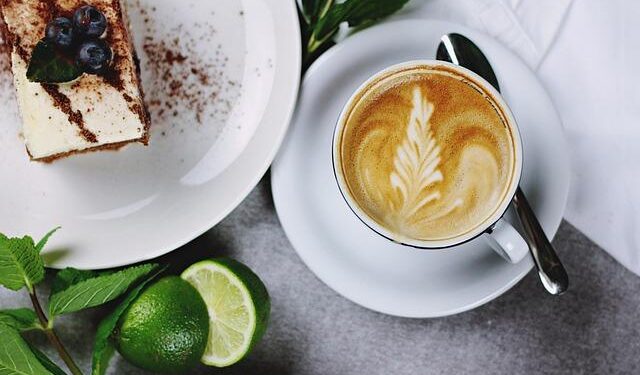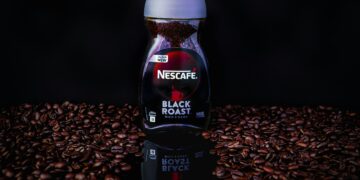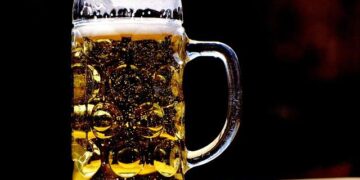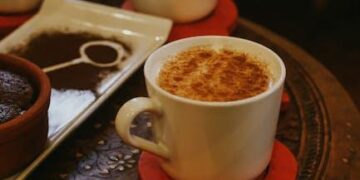Table of Contents
Section 1: The Modern Coffee Drinker’s Dilemma: The Search for the Trifecta of Quality, Convenience, and Cost
The contemporary coffee consumer is engaged in a perpetual and often frustrating quest for a daily coffee solution that satisfies three critical, yet frequently conflicting, demands: quality, convenience, and cost.
This search defines the modern at-home coffee experience, a landscape characterized by compromise.
On one end of the spectrum lies the cafe experience, which offers high-quality, professionally prepared beverages but at a significant financial and time cost.
A daily cold brew from a local coffee shop can cost between $4 and $5, accumulating to over $150 per month.1
A daily latte habit can easily exceed $900 annually.2
This expense is often coupled with the inconvenience of travel, waiting in lines, and the time commitment required to procure the beverage.
This dilemma has been amplified by a societal shift towards increased at-home consumption, a trend that solidified in the post-pandemic era and continues to shape consumer behavior.3
Consumers now aspire to replicate the cafe experience within their own kitchens, raising the standards for both do-it-yourself (DIY) methods and store-bought products.
The market has responded with a dizzying array of options.
The ready-to-drink (RTD) coffee aisle in any major grocery store is a testament to this saturation, featuring a multitude of brands including Stumptown, La Colombe, Califia Farms, Starbucks, and dozens of others.4
However, this abundance has created a paradox of choice.
Despite the seemingly endless options, finding a product that is consistently excellent, widely accessible, and reasonably priced remains a significant challenge for many consumers.
This is not merely a practical problem of logistics and economics; it is a deeply psychological one.
The search is for more than a caffeinated beverage; it is for a reliable daily ritual.
A subpar cup of coffee can disproportionately sour one’s mood and hinder productivity, making the quest for a dependable solution an emotionally charged endeavor.
The language used by consumers—describing their coffee as a vital “pick-me-up” or a cherished part of their day 7—highlights this emotional investment.
The brand itself has playfully acknowledged this high-stakes decision with the term “Cafobia: (n.) Fear of risking one’s morning ritual on an unknown coffee shop”.8
The frustration expressed in reviews of various coffee products—describing them as “tasteless,” “bitter,” or having a “funky after taste” 9—is not just a critique of flavor.
It is a lament over a failed ritual, a moment of anticipated pleasure or focus that has been squandered.
Therefore, the ideal solution is not just a product that tastes good once, but one that is dependably excellent.
The true value proposition is consistency, which removes the risk and anxiety from the crucial morning coffee decision.
Section 2: The At-Home Coffee Conundrum: An Analysis of Flawed Solutions
In an attempt to solve the quality-convenience-cost dilemma, consumers typically turn to two primary alternatives to the coffee shop: crafting their own cold brew at home or navigating the crowded aisle of RTD options.
Both paths are fraught with their own distinct and significant pitfalls, often leading to further frustration and reinforcing the initial problem.
Subsection 2.1: The Pitfalls of the Home Barista (The DIY Dream vs. Reality)
The allure of making cold brew at home is powerful and based on two compelling promises: superior cost-effectiveness and ultimate customization.
The math is undeniably attractive.
Compared to a $4-$5 daily cafe purchase, a homemade cup can cost as little as $0.71, potentially saving a consumer over $800 a year.11
A pound of coffee grounds, costing around $15, can last an avid drinker for several weeks, and the initial investment in a dedicated cold brew maker is a modest $25 to $40.1
However, this financial calculus ignores the hidden costs of time, effort, and inconsistency.
The reality of DIY cold brew is far from the simple, idyllic process often portrayed.
Achieving a consistently good result is a craft that requires significant trial and error.
User forums and discussions are filled with home baristas experimenting with variables like coffee grind size, water-to-coffee ratios, and steeping times, which can range from 12 to 24 hours.13
This experimentation frequently leads to inconsistent batches—some perfect, others disappointingly bitter or weak.
Furthermore, the process is labor-intensive.
It demands advance planning, the messy task of grinding beans, a long overnight steeping period, and a cumbersome filtering process to separate the grounds from the concentrate.14
This multi-step, time-consuming reality directly undermines the goal of convenience.
For the average person seeking a quick and reliable start to their busy day, DIY cold brew often proves to be more of a weekend hobby than a practical daily solution.
It forces a trade-off: money is saved, but at the expense of time, effort, and, most importantly, the guarantee of a good cup of coffee.
Subsection 2.2: Navigating the RTD Aisle: A Market of Inconsistency
For those deterred by the complexities of home brewing, the RTD coffee market appears to be the perfect solution, promising grab-and-go convenience without the mess.
The sheer variety of brands attests to the high demand for such a product.5
Yet, this path is its own kind of minefield, one where the consumer gambles on quality with every new purchase.
The fundamental issue plaguing the RTD market is rampant inconsistency.
While some brands are lauded, many others are criticized for a host of undesirable qualities that betray the very promise of cold brew.
Reviews frequently cite bitterness and high acidity, the exact characteristics that a proper cold brew process is designed to eliminate.7
Consumers complain of “chemical” or “metallic” aftertastes, with some noting that Starbucks’ canned Nitro Cold Brew can taste of the can it comes in.6
Other products are described as “watered down,” “tasteless,” or reminiscent of “unfiltered water,” failing to deliver the bold flavor coffee drinkers expect.9
Some brands, like Califia Farms, have proven particularly divisive, with reviewers calling them “undrinkable” or comparing them to “watered down hotel lobby coffee”.6
This demonstrates that simply grabbing any bottle off the shelf is a high-risk proposition that often leads back to the original problem: a disappointing and wasted coffee experience.
This widespread inconsistency is not a result of random chance or isolated production errors.
It points to a deeper, philosophical failure within much of the industry.
Many brands appear to treat cold brew not as a distinct brewing discipline with its own unique principles, but merely as a product variation—their standard coffee, just served cold.
The defining feature of authentic cold brew is the “low and slow” steeping method, which uses extended time rather than heat to gently extract flavor compounds, resulting in a brew that is naturally lower in acidity and bitterness.8
The prevalence of bitterness and acidity in many RTD products suggests that these core principles are being compromised, likely in favor of mass-production efficiency.
These brands may be cutting corners on steeping time, using an improper bean-to-water ratio, or selecting beans ill-suited for cold extraction.
They are applying a hot-brew mass-production mindset to a cold-brew product.
The consumer’s struggle to find a satisfying RTD coffee is, therefore, not just a matter of bad luck.
It is the predictable outcome of a market where many competitors have failed to embrace the fundamental philosophy that makes cold brew special in the first place.
The search is not just for a better product, but for a brand that demonstrates a superior and more authentic process.
Section 3: The “Low & Slow” Epiphany: A Brewing Philosophy, Not Just a Process
The solution to the at-home coffee conundrum emerges not from a new flavor or packaging, but from a fundamental shift in perspective: recognizing the critical importance of the brewing process itself.
In this context, the Stok brand presents itself as the embodiment of this epiphany.
It has built its entire identity not just on the final product, but on the meticulous, patient methodology used to create it—a philosophy they call “Low & Slow”.16
Stok’s brand messaging consistently and deliberately emphasizes its core brewing tenets.
The cornerstone of this philosophy is a steep time of at least 10 hours at lower temperatures, a process that champions “Time & Patience, Not Heat”.8
This contrasts sharply with hot brewing, which uses high temperatures to rapidly and aggressively force flavor from the bean.
Stok further differentiates its process by using a “higher ratio of coffee beans to water than typical hot brewing”.8
This higher concentration of Rainforest Alliance Certified, Arabica-based coffee beans is crucial for achieving the brand’s signature flavor profile: “Bold & Smooth”.18
The result is a coffee that is consistently described as being “never bitter,” directly addressing the single most common complaint leveled against both DIY attempts and competing RTD brands.15
The effectiveness of the “Low & Slow” method is grounded in basic coffee chemistry.
The high heat of traditional brewing extracts a wide range of compounds from coffee beans, including the desirable aromatic oils but also the harsh-tasting chlorogenic acids that contribute to bitterness and acidity.
Cold water extraction, by contrast, is a much gentler and more selective process.
Over an extended period, it effectively dissolves the flavor compounds responsible for the smooth, rich, and often chocolatey or nutty notes associated with high-quality coffee, while leaving many of the more bitter and acidic compounds behind in the grounds.
This scientific principle is the foundation of Stok’s celebrated smoothness.
This commitment to process is more than a manufacturing detail; it is the core of Stok’s marketing and brand identity.
The company doesn’t just sell coffee; it sells its philosophy.
The prominent placement of phrases like “Brewed Low & Slow,” “10-hr brew,” and “Time & Patience, Not Heat” on its packaging and website serves as a form of consumer education.8
This language proactively answers the skeptical consumer’s primary question: “Why should I believe this bottle is any different from the other bitter RTD coffees I’ve tried?” By transparently explaining the “how” behind their product, Stok demystifies the process and provides a rational basis for consumers to trust in the “what”—a smoother, bolder, more reliable cup of coffee.
This educational approach elevates the brand from a simple commodity to a trusted expert.
The consumer is made to feel they are purchasing from self-proclaimed “coffee nerds” who are “geeked out and caffeinated,” people who “get all fired up on method and process”.8
This narrative builds a powerful sense of expertise and authority directly into the product experience, fostering a level of trust that competitors who obscure their process cannot match.
Section 4: A Comprehensive Analysis of the Stok Portfolio: An Ecosystem of Choice
Built upon the foundational philosophy of its “Low & Slow” brewing process, Stok has developed a comprehensive and cohesive product ecosystem.
This portfolio is strategically designed to cater to a wide spectrum of consumer preferences—from the purist to the flavor-seeker—without ever compromising the core brand promise of a smooth, bold, and non-bitter coffee experience.
The product lines function not as disparate offerings, but as variations on a central, masterfully executed theme.
Subsection 4.1: The Foundation – The Black Coffee Line
This line represents the purest expression of the Stok brand and serves as the versatile base for countless at-home coffee creations.
- Un-Sweet / Unsweetened: This is the flagship product, offering the unadulterated “Stokness.” It is a medium-roast blend served black, with a flavor profile noted for its smoothness and hints of molasses and brown sugar.18 With a caffeine content ranging from approximately 125 mg to 145 mg per 12 oz serving, it targets the coffee purist who prefers to control their own additions of milk or sugar, or who enjoys their coffee black.20 It is consistently praised for its mellow, stout-like character and lack of bitterness.15
- Not Too Sweet: Acting as a “gateway” into the brand, this product takes the classic black coffee base and adds a “dialed-in amount of cane sugar”.19 Its name is a marketing masterstroke, perfectly communicating its value proposition: a touch of sweetness that enhances the coffee flavor without overwhelming it. Containing approximately 130 mg of caffeine per 12 oz serving, it appeals to consumers who desire a slightly sweetened beverage that avoids the syrupy quality of many pre-sweetened coffee drinks.19
- Extra Bold: This is the high-octane offering for those seeking a more intense experience. It is made with a darker roast and a higher concentration of beans, resulting in a more robust coffee flavor and a higher caffeine content of approximately 170 mg per 12 oz serving.17 Critically, it achieves this boldness while maintaining the signature Stok smoothness, remaining “never bitter”.17
- Espresso Blend: Positioned as the aficionado’s choice, this is the brand’s darkest roast. It delivers a deep, complex flavor profile with notes of chocolate, nuts, and dried fruit, reminiscent of a classic espresso.23 It also boasts the highest caffeine content in the black coffee line, at approximately 195 mg per 12 oz serving.23 This blend is highly rated for its ability to provide the rich, bold flavor of espresso with the low acidity and smoothness of cold brew, making it a unique and compelling option.15
Subsection 4.2: Expanding the Palate – The Creamed & Seasonal Lines
This category extends the Stok experience to consumers seeking a complete, indulgent, coffee-shop-style beverage that is ready to pour.
- Creamed/Cappuccino: Offerings like the Stok Cappuccino blend the cold brew base with skim milk, cream, and cane sugar to create a rich, balanced, and convenient latte-style drink.24 These products are designed to deliver a cafe-quality experience at home, eliminating the need for any preparation beyond pouring over ice.3
- Seasonal Offerings: By launching limited-time flavors such as Pumpkin Creamed and Peppermint Mocha, Stok strategically taps into seasonal consumer trends and competes directly with the popular limited-time offers (LTOs) from major coffee chains.24 This tactic not only captures seasonal spending but also keeps the brand fresh and relevant in the minds of consumers.
Subsection 4.3: Functional Innovation – The Energy & Decaf Offerings
Stok has demonstrated a keen ability to innovate beyond traditional coffee by entering functional beverage categories, significantly broadening its market appeal.
- Cold Brew Energy: This line represents a direct and strategic move into the massive and growing energy drink market, a category largely driven by younger, Gen Z consumers.3 Products like the Vanilla, Mocha, and Caramel Cream Energy drinks combine the Stok cold brew base with additional caffeine (for a total of around 195 mg), B-vitamins, ginseng, and guarana.3 This creates a hybrid product that offers the flavor of a coffee drink with the functional benefits of an energy drink.
- Decaf: Perhaps one of the brand’s most significant innovations, Stok was the first to offer a nationally available, ready-to-drink decaffeinated cold brew in a multi-serve format.3 Using the common European Method to remove about 97% of the caffeine, this product finally allows consumers to enjoy the taste of cold brew at any time of day without the stimulant effect.28 It has been highly praised in taste tests for delivering a rich, smooth flavor that is remarkably free of the “sour note” that often plagues decaffeinated coffee, making it a game-changing option for the category.15
Table 1: Stok Cold Brew Product Line Analysis
The following table provides a consolidated overview of Stok’s core product offerings, illustrating the strategic platform approach where a consistent, high-quality brewing process serves as the foundation for a diverse portfolio.
| Product Name | Category | Sweetness Level | Key Ingredients (representative) | Caffeine (mg/12oz, approx.) | Key Flavor Profile & Notes | Target Consumer |
| Un-Sweet Black | Black Coffee | Unsweetened | Coffee (Filtered Water, Coffee), Natural Flavor 18 | 125-145 20 | Bold, smooth, notes of molasses & brown sugar. 18 | The purist; the at-home mixer who controls their own additives. |
| Not Too Sweet | Black Coffee | Lightly Sweetened | Coffee (Filtered Water, Coffee), Cane Sugar, Natural Flavor 22 | 130 19 | The classic Stok profile with a “dialed-in” sweetness, not syrupy. 19 | The consumer seeking a hint of sweetness without it being a dessert drink. |
| Extra Bold | Black Coffee | Unsweetened | Coffee (Filtered Water, Coffee) 17 | 170 17 | Darker roast, more robust coffee flavor, yet still smooth and never bitter. 17 | The high-caffeine seeker who refuses to sacrifice smoothness for strength. |
| Espresso Blend | Black Coffee | Unsweetened | Coffee (Filtered Water, Coffee) 23 | 195 23 | Darkest roast; complex notes of chocolate, nuts, and dried fruit. 23 | The espresso lover who desires the rich flavor profile with cold brew’s low acidity. |
| Cappuccino | Creamed Coffee | Sweetened | Coffee, Skim Milk, Cane Sugar, Cream, Natural Flavor 25 | 120-170 (varies) 28 | A creamy, balanced, coffee-forward cappuccino flavor. 24 | The consumer wanting a complete, indulgent, cafe-style beverage at home. |
| Pumpkin Creamed | Seasonal | Sweetened | Coffee, Milk, Sugar, Natural Flavors 26 | 122 26 | Creamy texture with the popular seasonal flavor of pumpkin spice. 24 | The trend-conscious consumer seeking seasonal cafe favorites at home. |
| Vanilla Cream | Energy | Sweetened | Coffee, Milk, Sugar, Ginseng, Guarana, B-Vitamins 3 | 195 10 | Creamy vanilla flavor combined with functional energy-boosting ingredients. 27 | The energy drink user looking for a better-tasting, coffee-based alternative. |
| Decaf Un-Sweet | Decaf Coffee | Unsweetened | Decaffeinated Coffee (Filtered Water, Coffee) 24 | ~4-5 (97% less) 28 | A bold and smooth profile, praised for lacking off-notes typical of decaf. 15 | The caffeine-sensitive consumer or anyone wanting an evening coffee treat. |
Section 5: Stok in the Arena: A Competitive Market Analysis
Stok’s success is not just a result of its internal philosophy and product development; it is also defined by its strategic positioning within a fiercely competitive marketplace.
An analysis of Stok against its primary competitors—other RTD brands and the DIY method—reveals a well-calculated strategy that has allowed it to capture a dominant share of the market.
Subsection 5.1: Brand vs. Brand – The RTD Showdown
The ready-to-drink coffee aisle is a battleground of distinct brand identities and flavor profiles.
Stok’s competitive strength lies in its ability to deliver a unique and highly desirable set of attributes.
- Stok vs. The Craft Darlings (Stumptown, La Colombe): Brands like Stumptown and La Colombe are often considered the gold standard by coffee connoisseurs. Stumptown’s Original Cold Brew is frequently hailed as the “Best of the Best,” earning a perfect 10/10 score for its fresh, bold, and fruity flavor profile.5 La Colombe is similarly praised for its rich, chocolatey character.5 While these brands excel in complexity, Stok’s competitive advantage lies in its mastery of smoothness and broad appeal. Stok’s Unsweet Black also earned a perfect 10/10 score in the same taste test as Stumptown, but it was lauded for different qualities: a mellow, non-bitter, almost stout-like smoothness.15 This profile is often more approachable for a wider range of palates than the more acidic or complex notes of some craft brands, positioning Stok as the accessible champion of smoothness.
- Stok vs. The Mainstream Giants (Starbucks, Califia Farms): When compared to other mass-market brands, Stok’s superior process becomes even more apparent. It consistently outperforms these competitors in taste tests where smoothness and the absence of off-flavors are key criteria. It avoids the “metallic can” aftertaste sometimes associated with Starbucks’ canned offerings and the “bitter as hell” quality found in many generic cold brews.15 Furthermore, it sidesteps the “watered down” or “chemical” taste that some consumers attribute to brands like Califia Farms.6 Stok’s crucial advantage here is its price-to-performance ratio. It delivers a quality that rivals or even matches that of premium craft brands, but at a more accessible grocery store price point, making it a superior value proposition for the everyday consumer.9
Subsection 5.2: Convenience vs. Cost – Stok vs. DIY Revisited
When reconsidering the DIY method, a more nuanced analysis reveals that while home brewing is cheaper on a strict per-cup basis, Stok offers a superior overall value proposition.
The price of a bottle of Stok purchases more than just coffee; it buys certainty.
It guarantees a perfectly consistent, high-quality, non-bitter product every single time.
This completely eliminates the risk, time, effort, and messy cleanup associated with the often-unpredictable results of home brewing.14
In essence, Stok provides a reliable and effective solution to the psychological burden of “Cafobia”—the fear of a ruined morning ritual.8
It represents a “third way” that skillfully captures the best of both worlds: it delivers near-cafe-level quality and absolute consistency with the convenience and significantly lower cost of an at-home product.
Stok’s market dominance can be understood as a mastery of a crucial market position.
The brand has succeeded not necessarily by being the absolute “best” or most complex coffee on a craft purist’s scorecard, but by being the best possible version of a mass-market, accessible, and consistent product.
It occupies a strategic sweet spot that is demonstrably superior in quality to generic RTD offerings but is more approachable, reliable, and widely available than high-end craft brands or finicky DIY methods.6
The fact that its Unsweet Black can earn a perfect score alongside a craft darling like Stumptown, while being praised for qualities like mellow smoothness that have immense mass appeal, is a testament to this strategy.15
Its widespread distribution in major retailers like Target and Walmart confirms its mass-market focus.10
Stok’s genius lies not in trying to out-craft the craft brands, but in fundamentally elevating the standard of quality for the everyday coffee drinker.
Section 6: The Danone Engine: Brand Strategy and Future Trajectory
The remarkable rise of the Stok brand from a niche product to a market leader cannot be fully understood without examining the corporate strategy and resources of its parent company, Danone.
The fusion of Stok’s authentic product philosophy with Danone’s global business acumen has created a formidable force in the beverage industry.
From Niche to Juggernaut: The Danone Effect
Stok’s journey began nearly a decade ago with a single, relatively niche product: an espresso coffee shot.3
Its evolution into the top-selling RTD black coffee brand by velocity is a direct result of its integration into the Danone North America portfolio.3
The acquisition provided Stok with the essential ingredients for explosive growth: the massive capital required for research, development, and expansion; access to Danone’s vast distribution network, which placed the product on the shelves of virtually every major retailer nationwide; and the significant marketing budget needed to launch large-scale, attention-grabbing campaigns.
Danone’s recent investment of $65 million in a new Florida bottling plant is a clear signal of its commitment to fueling Stok’s continued expansion.30
Marketing the Maverick: Building a Cult Following
A key element of Stok’s success has been its distinct and effective marketing strategy, which Danone has clearly supported.
The brand has cultivated a “counter-culture” identity that resonates deeply with consumers tired of generic corporate messaging.3
- The Wrexham AFC Sponsorship: A prime example of this maverick approach is Stok’s sponsorship of a Welsh football club co-owned by Hollywood celebrities Ryan Reynolds and Rob McElhenney.3 This unexpected, quirky partnership between an American cold brew brand and a lower-league Welsh team generated immense international buzz and aligned the brand with a compelling underdog story, building significant cultural cachet.
- Self-Deprecating Humor: The brand’s voice is consistently witty, relatable, and avoids taking itself too seriously. Descriptions like having “enough caffeine to make the DMV move like a racecar pit stop” 13 create a humorous and memorable brand personality that stands in sharp contrast to the earnest, often pretentious marketing of other premium coffee brands. This approach makes consumers feel that they are connecting with a brand that shares their values and sense of humor.3
Future Outlook: Where Does Stok Go From Here?
Interviews with Danone executives, such as Vice President of Ready-to-Drink Beverages Brittney Polka, provide a clear roadmap for the brand’s future trajectory.3
The strategy will be built on three pillars:
- Continued Innovation: The brand will continue to push into new and growing categories, particularly functional coffee, as exemplified by the successful launch of the Stok Cold Brew Energy line. The focus will remain on developing new formats and flavors that meet the evolving desires of the modern consumer.
- Meeting At-Home Demand: Recognizing the sustained trend of at-home consumption, Stok will continue to prioritize products that empower consumers to customize their coffee experiences, with its versatile black coffee line serving as the perfect foundation.
- Authentic Engagement: The brand will double down on its unique marketing approach, seeking out unconventional partnerships and maintaining its witty, authentic voice to grow and nurture its loyal community of “cold brew superfans”.3
Stok is far more than just another successful product in Danone’s extensive portfolio, which includes legacy brands like Dannon, Oikos, and Silk.30
It is Danone’s primary strategic weapon in the highly lucrative and competitive global coffee wars.
The RTD coffee market is a key battleground, with established giants like Starbucks and formidable new entrants from competitors like Nestlé vying for dominance.3
Danone’s description of Stok as a “category leader” that is “more than just traditional cold brew coffee” signals its critical strategic importance.3
The massive investments in production capacity and high-profile marketing are not the actions of a company managing a minor brand; they are the calculated moves of a global corporation leveraging a powerful asset to capture a significant share of the future of coffee consumption.
Every new product launch and marketing campaign is a deliberate play in this high-stakes corporate chess game.
Section 7: Final Synthesis: The Verdict on Stok
The journey through the modern coffee landscape reveals a clear and persistent dilemma: the consumer’s search for a daily beverage that successfully balances exceptional quality, ultimate convenience, and reasonable cost.
The common paths taken to solve this problem—the laborious and inconsistent craft of DIY home brewing and the gamble of navigating a saturated RTD market—are often dead ends, leading to compromise and disappointment.
The resolution to this conundrum is not found in a new flavor or a clever gimmick, but in the discovery and embrace of a superior brewing philosophy.
The “Low & Slow” method, which champions patience and time over the aggressive heat of traditional brewing, stands as the true solution to the core problems of bitterness and inconsistency that plague so much of the coffee world.
Stok’s market success is a direct result of its unwavering commitment to this philosophy, a commitment that is manifested in three key pillars:
- A Superior Process: Stok’s foundation is its genuine and disciplined adherence to the “Low & Slow” doctrine. By steeping a high ratio of Arabica beans for over 10 hours, the brand consistently produces a coffee that is uniquely bold, exceptionally smooth, and reliably free of bitterness.
- An Accessible Portfolio: The brand has intelligently built a diverse ecosystem of products upon this quality foundation. From pure, unsweetened black coffees to indulgent creamed beverages and innovative functional drinks, the portfolio caters to a wide array of consumer tastes and needs without ever sacrificing the core quality of the brew.
- A Trustworthy Brand: Through a smart, authentic, and educational marketing strategy, Stok has built more than just a customer base; it has cultivated a loyal community. By being transparent about its process and adopting a relatable, humorous voice, the brand has established a deep level of trust and authority.
For the consumer trapped in the modern coffee conundrum, Stok represents the most intelligent and satisfying resolution available in the ready-to-drink market.
It is the successful embodiment of a better way to brew, delivering a consistently high-quality, delicious, and reliable daily ritual in a bottle.
Works cited
- Is it Cheaper to Make Cold Brew at Home? – Primula Products, accessed August 6, 2025, https://primulaproducts.com/a/blog/is-it-cheaper-to-make-cold-brew-at-home
- Here’s How Much You’ll Save Making Coffee at Home – CNET, accessed August 6, 2025, https://www.cnet.com/home/kitchen-and-household/heres-how-much-youll-save-making-coffee-at-home/
- Inside the evolution of Danone’s Stōk | Food Dive, accessed August 6, 2025, https://www.fooddive.com/news/inside-the-evolution-of-danones-stok-from-an-espresso-coffee-shot-to-cold/735053/
- SToK Cold Brew Coffee, Extra Bold, Dark Roast Brewed Low And Slow, Unsweetened, Black Coffee 48 FL OZ Bottle – paseoguatemala.gt, accessed August 6, 2025, https://paseoguatemala.gt/1118675/SToK-Cold-Brew-Coffee-Extra-Bold-Dark-Roast-Brewed-Low-And
- Taste Test: Ready-to-Drink Cold Brew Coffee – Imbibe Magazine, accessed August 6, 2025, https://imbibemagazine.com/taste-test-ready-to-drink-cold-brew-coffee/
- Share how you rank store-bought cold brew : r/coldbrew – Reddit, accessed August 6, 2025, https://www.reddit.com/r/coldbrew/comments/1jet1ou/share_how_you_rank_storebought_cold_brew/
- Stok Reviews 2025 – Read Before You Buy | Thingtesting, accessed August 6, 2025, https://thingtesting.com/brands/stok/reviews
- Stok Cold Brew Coffee Un-Sweet 48oz BTL | Garden Grocer, accessed August 6, 2025, https://www.gardengrocer.com/product/3800-stok-cold-brew-coffee-un-sweet-48oz-btl
- SToK Not Too Sweet Black Cold Brew Coffee – 48 fl oz – Target, accessed August 6, 2025, https://www.target.com/p/stok-not-too-sweet-black-cold-brew-coffee-48-fl-oz/-/A-50694766
- Customer reviews for (12 pack) SToK Cold Brew Energy Vanilla Cream Energy Coffee Beverage, 11 fl oz – Walmart, accessed August 6, 2025, https://www.walmart.com/reviews/product/15046052344
- Saving Money with Cold Brew Coffee – Ovalware, accessed August 6, 2025, https://www.ovalware.com/blogs/oval-blog/saving-money-with-cold-brew-coffee
- Coffee At Home vs. To Go: Which is Healthier and More Cost-Effective? – Absopure, accessed August 6, 2025, https://www.absopure.com/blog/coffee-at-home-vs-to-go-which-is-healthier-and-more-cost-effective/
- How Much Caffeine is in Cold Brew Coffee? | STōK, accessed August 6, 2025, https://www.stokbrew.com/what-is-cold-brew/how-much-caffeine-is-in-cold-brew/
- Iced Coffee at home : r/BuyCanadian – Reddit, accessed August 6, 2025, https://www.reddit.com/r/BuyCanadian/comments/1k8sklp/iced_coffee_at_home/
- Best Cold Brew Coffee We Found in a Taste Test – Sporked, accessed August 6, 2025, https://sporked.com/article/best-cold-brew/
- Stok, Chocolate Black Cold Brew Coffee (48 fl oz) | Shop – Weis Markets, accessed August 6, 2025, https://www.weismarkets.com/shop/product/stok-chocolate-black-cold-brew-coffee/729690
- Xtra Bold Stok Cold Brew Coffee 48oz – East Hampton IGA, accessed August 6, 2025, https://easthampton.adamshometownmarkets.com/product/03663207262
- SToK Black Unsweetened Cold Brew Coffee – 48 Fl. Oz. – Haggen, accessed August 6, 2025, https://www.haggen.com/shop/product-details.960192382.html
- SToK Not Too Sweet Black Cold Brew Coffee – Shop Coffee at H-E-B, accessed August 6, 2025, https://www.heb.com/product-detail/stok-not-too-sweet-black-cold-brew-coffee/2116056
- Stok, Cold Brew Bold & Smooth Un-Sweet Black (48 fl oz) | Shop – Stater Bros, accessed August 6, 2025, https://shop.staterbros.com/shop/product/stok-cold-brew-bold-smooth-un-sweet-black/2610291
- SToK Black Unsweetened Cold Brew Coffee – 48 fl oz – Target, accessed August 6, 2025, https://www.target.com/p/stok-black-unsweetened-cold-brew-coffee-48-fl-oz/-/A-50694768
- STōK Not Too Sweet Black Cold Brew Coffee, accessed August 6, 2025, https://www.stokbrew.com/cold-brew/cold-brew-coffee/not-too-sweet-cold-brew-coffee-48oz
- Stok Cold Brew Expresso Blend Darkest Roast Darkest Roast Un-Sweet Black Coffee, accessed August 6, 2025, https://discount-drugmart.com/products/details?id=000366320780709421306
- STōK Cold Brew Coffee Flavors, accessed August 6, 2025, https://www.stokbrew.com/cold-brew/cold-brew-coffee/
- STōK Mocha Creamed Cold Brew Coffee, accessed August 6, 2025, https://www.stokbrew.com/cold-brew/cold-brew-coffee/cappuccino-cold-brew-coffee-48oz
- SToK Pumpkin Creamed Cold Brew Coffee – 48 Count – Shaw’s, accessed August 6, 2025, https://www.shaws.com/shop/product-details.970002915.html
- STōK Cold Brew Coffee Energy Drinks, accessed August 6, 2025, https://www.stokbrew.com/cold-brew/cold-brew-energy/
- Cold Brew Coffee FAQs | STōK, accessed August 6, 2025, https://www.stokbrew.com/faq/
- 9 Best Store-Bought Cold Brew Coffees, According to Food Network Staffers, accessed August 6, 2025, https://www.foodnetwork.com/how-to/packages/shopping/product-reviews/best-cold-brew-coffee
- Stōk Owner Danone Plans $65 Million Florida Bottling Plant, accessed August 6, 2025, https://dailycoffeenews.com/2023/03/01/stok-owner-danone-plans-65-million-florida-bottling-plant/
- STōK Cold Brew Coffee, accessed August 6, 2025, https://www.stokbrew.com/
- STōK Cold Brew Coffee + Wrexham AFC | Partnership Campaign – The Shorty Awards, accessed August 6, 2025, https://shortyawards.com/16th/stok-wrexham-partnership






